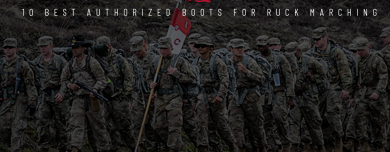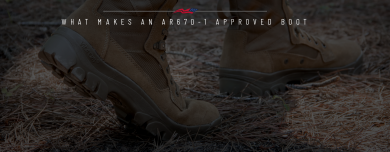
It’s a common belief that medieval knights were almost immobilized by the weight of their armor. Let me be clear- I’m not speaking on the classic horse-mounted knight with a lance (completely different set of armor all together). I am referring to that era’s ground-pounding grunts. For these guys, the game was quite different. A full suit of top quality plate armor, including helmet, weighed from 35 to 45 pounds and spread that load evenly over the whole body. Not only could these knights run, jump and even swim in their protective gear – they could fight fast and hard. Far from the lumbering, vulnerable targets of popular myth, they were agile and mobile shock troops.
Today’s Combat Load
Now let’s move on to the modern combat load. Anyone who first served any longer ago than a decade will hardly recognize the gear carried by today’s infantryman. Uniforms are more comfortable, load carrying gear is more flexible and has greater capacity, and once-rare items like night vision and radios are now universal. The 21st century infantryman is better protected, better informed and more lethal than ever. But all this extra capability comes at a price – weight.
“Half the problem we face in Afghanistan is that dismounted troops can’t move fast enough to bring the fight to the Taliban.”
Body armor is probably the heaviest single item the average soldier carries. Current standard sets weigh over 30 pounds for the vest (in full configuration). Add ammo (210 rounds for most people at minimum) and water, and already you have a lot more weight than that suit of armor… and it’s all strapped around the torso. Then there are MREs, combat lifesaver gear, NVGs, radios, GPS, ECM in an IED threat environment, plus spare batteries for everything. And that’s only the fighting load! Figure in a pack with spare uniforms, sleeping bag, bivi cover, Poncho liner (woobie), more water, more MREs and hygiene kits, etc. Add mission-specific equipment – route clearance systems, breacher tools or whatever – and slap a MICH helmet on top. Before you know it, you’re talking well over a hundred pounds. That’s just far too much.
Light = Lethal, Heavy = Not?’
Western armies have always tended to overload their soldiers in peacetime, but when the shooting starts, the infantry sets their own priorities. US troops in Vietnam ruthlessly stripped down their gear, crammed most of what was left into their rucks and went into action carrying water, as much ammo as they could scrounge and not much else. The British in the Falklands did pretty much the same, although they had to carry more gear because of the colder climate and shortage of helicopter resupply.
The problem is, today’s infantryman has a lot less fat to trim. The emphasis on force protection and duty of care means he can’t do what his counterparts in the A Shau Valley (Battle of Hamburger Hill) or East Falkland did and ditch his body armor, because to put it bluntly, commanders have become risk averse.
The question is… are they making the risk worse?
Half the problem we face in Afghanistan is that dismounted troops can’t move fast enough to bring the fight to the Taliban. A lot gets said about the fitness of the enemy, but really they’re just scrawny, malnourished tribesmen from a society with no health care. They don’t outmaneuver ISAF troops because of superior fitness; they do it because 3 AK mags and a cotton jacket weigh a lot less than what our side is carrying. Maybe they’re more vulnerable to fragmentation and small arms as a result, but they get to choose when and where they engage, and unless they can be fixed by fire support, they’re also free to disengage pretty much at will.
Two Options
With their weight burden reduced, friendly troops – who really do have superior fitness – could move faster and close with the enemy. That’s the key to dominating the ground, and in Afghanistan we failed badly at that task. Afghanistan is winding down now, but before we find ourselves in the same situation again, we need to take a serious look at cutting the load. Some smart procurement has managed to shave of 24 pounds off the total, but we need to do much better than that.
There are a couple options here. By no means the only two options, but food for thought…
- In a permissive environment, helicopter resupply – or perhaps cargo UAVs in the future – could keep foot patrols topped up with water, ammunition and batteries. That falls apart if the resupply can’t get in, and it doesn’t take the enemy to do that; accidents and weather can manage it easily enough. So that’s likely out.
- The other is to accept a higher level of risk by having another look at armor. Its weight and bulk is worth paying for mounted operations, but is it really saving soldiers on foot, or is it making them more vulnerable by slowing them down and wearing them out?
The soldiers themselves often say they feel safer when they’re more agile. Maybe the brass needs to start listening to them.
Personally during my numerous deployments as an infantryman, I found myself saying, “Why are we wearing this? I’d be able to move so much faster if I wasn’t wearing this piece or that piece. If I do run into the situation, what I’m wearing is going to make me a slower and easier acquired target.”
Why can’t we exercise common sense and over-ride the desire for uniformity when it’s less advantageous? You will always hear about some Pvt. Joe Schmuckateli somewhere who was saved by his full outfit of interceptor body armor or his MICH. But how many other people could have not fallen because they were able to move faster or without fighting more tired because of the cumbersome gear? That’s the question we must ask ourselves.






